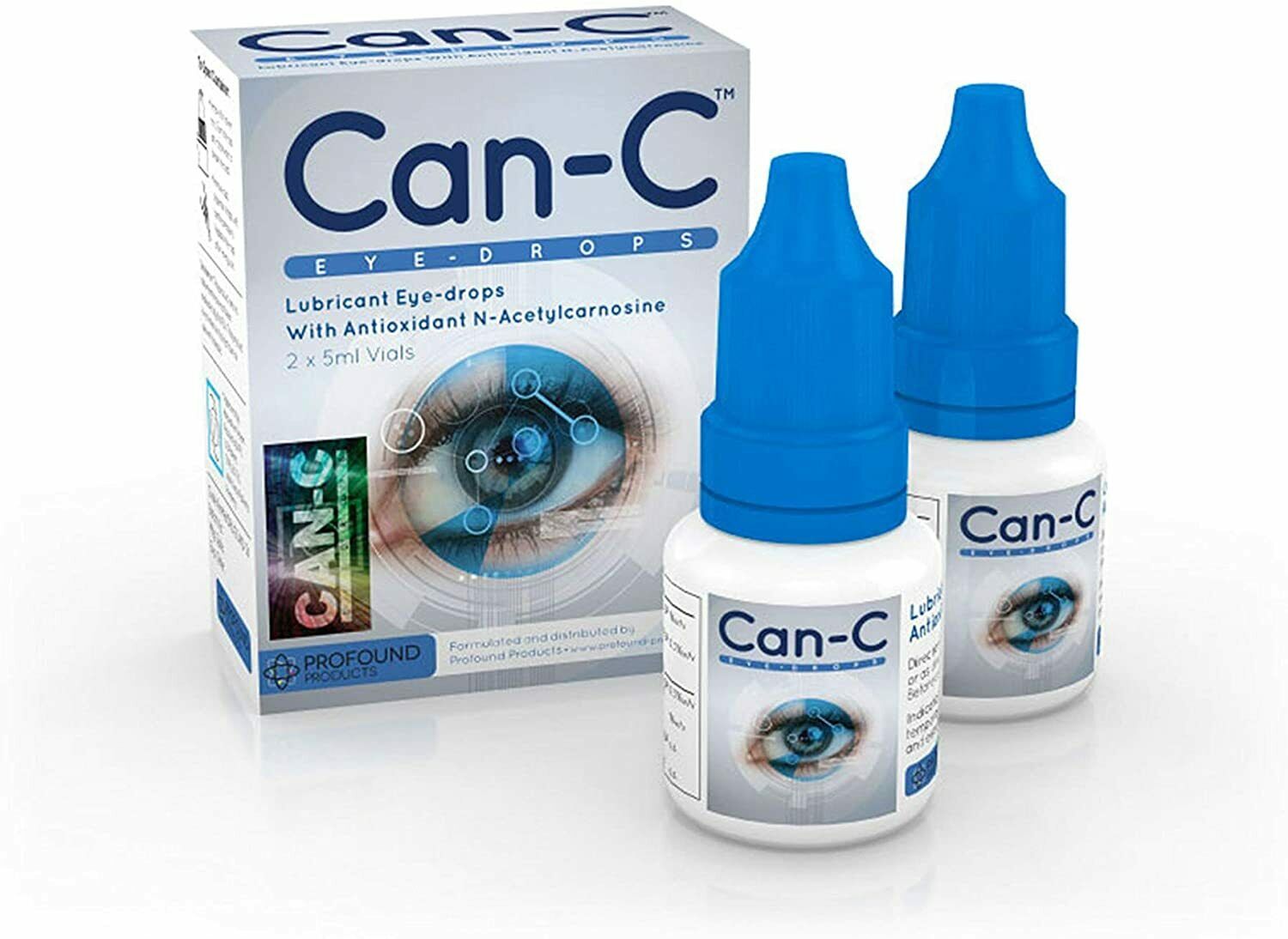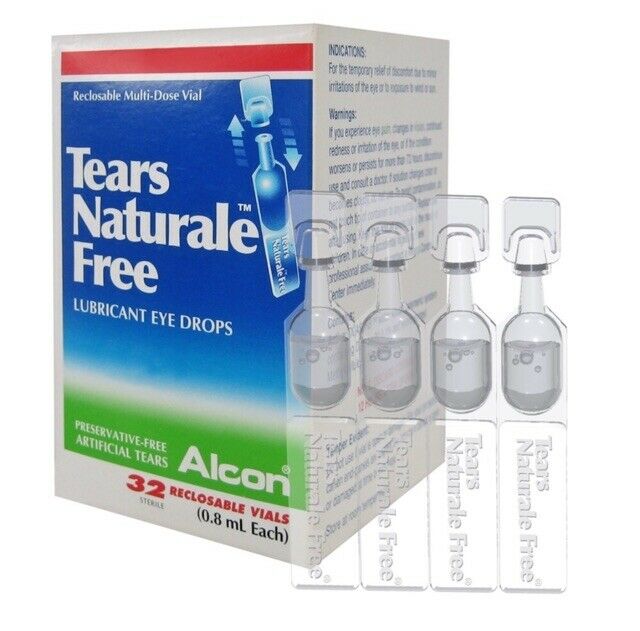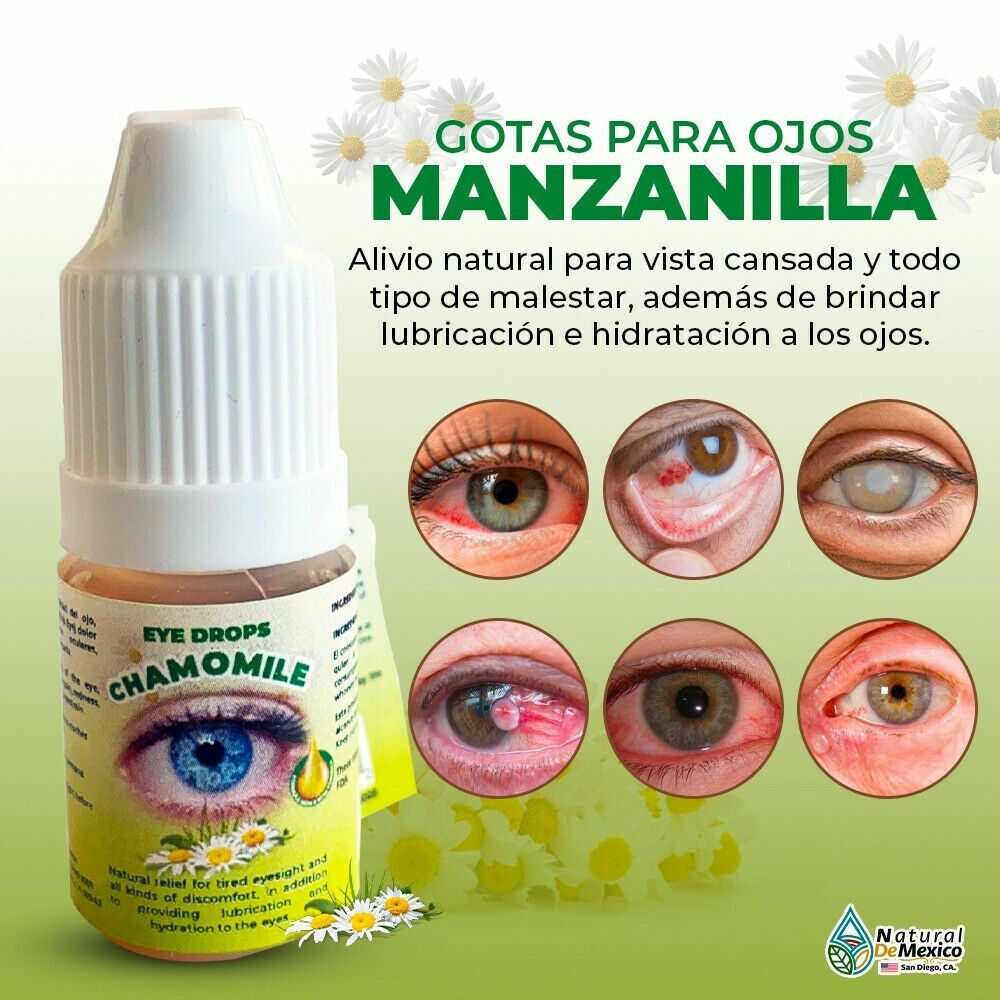need help?
[email protected]Can-C Lubricant Eye Drops With N-Acetylcarnosine 10ml - 2 In One Pack
$13.17 $21.95
- Product Code: Can-C
- Availability: 106
- Price in reward points: 1234
- 1000 Units in Stock
- Body Area:Eyes
- Brand:Can-C
- Type:Eye Drops
- Condition:New
- Size:10 ml
- All returns accepted:ReturnsNotAccepted
- Custom Bundle:No
- Main Purpose:Anti Red Eyes
- Dosage:10 mg
- Formulation:Drops
- Active Ingredients:N-Acetylcarnosine
- MPN:CANC1
What is Can-C™?
Can-C™ uniquely contains N-acetylcarnosine which is pronounced: n-a-seat-till-carn-o-seen. This natural molecule is known as a di-peptide. A di-peptide are two aminoacids linked together.
Carnosine is found naturally in foods and in human cells and acts as a protector having both anti-oxidant and anti-glycation properties, however the levels of carnosine decline with age and there is a link between its declining level and the onset of certain aging disorders including forms of cataract.
Can-C eye-drops have been specially produced to licensed cGMP pharmaceutical standards.
Can-C ingredients:
N-a-Acetyl-Carnosine (NAC) 1.0% (approved by IVP)
Glycerin (lubricant) 1.0%
Carboxymethylcellulose sodium (lubricant) 0.3%
Excipients:
Sterile Water (Ophthalmic Grade Isotonic Solution, pH 6.7 to 6.9)
buffered with Potassium Phosphate
Dibasic and Potassium Phosphate Monobasic
Purified Benzyl Alcohol (Preservative)
Why are Can-C™ eye-drops used?
Can-C™ contains a unique form of N-acetylcarnosine which has been shown in animal and clinical trials to help reduce, slow and even reverse the occurrence of senile cataract.
Senile cataract is the most commonly performed surgical operation in the world today. Some 26,000 people each year, in the United States alone, are diagnosed with senile cataract each day. There are 1.35 million eye operations each year in the USA and 2% of them (27,000 individuals) develop serious complications as a direct result of their cataract surgery.
Apart from the discomfort experienced by patients as their vision diminishes, and the possibility of being one of the surgical complications, it should not be overlooked that there is a complete lack of accommodation by the removal of the lens. It is obvious that an artificial lens does not have the optical quality of a natural lens.
Can-C eye-drops are therefore a major advancement in the control of the age-related disorder of senile cataract.
The statistics in the human trials show that Can-C eye-drops applied for 6-months (twice daily into the eye), in patients all suffering from senile cataract, had the following results:
88.9% had an improvement of glare sensitivity.
41.5% had an improvement in the transmissivity of the lens.
90% had an improvement in visual acuity.
This is a genuine breakthrough, because before the development of Can-C eye-drops, the best that could be hoped for would be a slowing of the disorder. So now for the very first time, it has been shown that senile cataract can be influenced without surgery.
In addition to senile cataract, Can-C may also have other benefits. Although the information is not yet published, Dr. Mark Babizayev believes that the unique Can-Cä formula with its added and synergistic lubricants, could also have benefit in the following eye disorders.
Presbyopia.
Open-angle primary glaucoma.
Corneal disorders.
Computer vision syndrome.
Eye strain.
Ocular inflammation.
Blurred vision.
Dry eye syndrome.
Retinal diseases.
Vitreous opacities and lesions.
Complications of diabetes mellitus and other systemic diseases.
Benefit for those who wear contact lenses, particularly soft contact lenses. (Not only do the lubricants in Can-C help making contact lenses more comfortable, but N-acetylcarnosine is also believed to reduce the build up of lactic acid in the eye, thus enabling the lenses to be left safely in the eye for longer).
How and when do I use Can-C™ eye-drops?
As is usual with most treatments, the earlier one starts the better the results that can be expected.
In the clinical trials, persons who had senile cataracts for less than 7-years had the fastest and greatest results. Persons with cataract from 7-15 years still had good results, but persons who had maintained cataracts for more than 15-years had the least beneficial results, although even then they still managed to obtain improvements.
Opticians can know that the technical measurement, is that vision should ideally not be worse than 0.3 (which is equivilant to 20/70).
Can-C eye-drops have been shown to have measurable affects within only 1-month of use! However, it is recommended that for maximum efficacy, that administration be continued for a period not less than 3-5 months. As most of the clinical trials have been measured at 3 and 6 month periods, a period of 6-months should be considered.
Dosages
Treatment dosages are at 1 or 2 drops, twice a day.
There is no benefit to use more than 4-drops per eye per day- so do not exceed this dose.
Also consider that senile cataract is an on-going aging disorder. It is because of low anti-oxidant and higher free radical activity (due to age), that Can-C may be required on a regular basis to help maintain the eye’s natural anti-oxidant defenses, and therefore help to prevent a reappearance of senile cataract and other eye degenerative disorders. As a preventative measure, 1-drop into the eye once a day with occasional breaks may be a suitable on-going regime.
Can-C™ uniquely contains N-acetylcarnosine which is pronounced: n-a-seat-till-carn-o-seen. This natural molecule is known as a di-peptide. A di-peptide are two aminoacids linked together.
Carnosine is found naturally in foods and in human cells and acts as a protector having both anti-oxidant and anti-glycation properties, however the levels of carnosine decline with age and there is a link between its declining level and the onset of certain aging disorders including forms of cataract.
Can-C eye-drops have been specially produced to licensed cGMP pharmaceutical standards.
Can-C ingredients:
N-a-Acetyl-Carnosine (NAC) 1.0% (approved by IVP)
Glycerin (lubricant) 1.0%
Carboxymethylcellulose sodium (lubricant) 0.3%
Excipients:
Sterile Water (Ophthalmic Grade Isotonic Solution, pH 6.7 to 6.9)
buffered with Potassium Phosphate
Dibasic and Potassium Phosphate Monobasic
Purified Benzyl Alcohol (Preservative)
Why are Can-C™ eye-drops used?
Can-C™ contains a unique form of N-acetylcarnosine which has been shown in animal and clinical trials to help reduce, slow and even reverse the occurrence of senile cataract.
Senile cataract is the most commonly performed surgical operation in the world today. Some 26,000 people each year, in the United States alone, are diagnosed with senile cataract each day. There are 1.35 million eye operations each year in the USA and 2% of them (27,000 individuals) develop serious complications as a direct result of their cataract surgery.
Apart from the discomfort experienced by patients as their vision diminishes, and the possibility of being one of the surgical complications, it should not be overlooked that there is a complete lack of accommodation by the removal of the lens. It is obvious that an artificial lens does not have the optical quality of a natural lens.
Can-C eye-drops are therefore a major advancement in the control of the age-related disorder of senile cataract.
The statistics in the human trials show that Can-C eye-drops applied for 6-months (twice daily into the eye), in patients all suffering from senile cataract, had the following results:
88.9% had an improvement of glare sensitivity.
41.5% had an improvement in the transmissivity of the lens.
90% had an improvement in visual acuity.
This is a genuine breakthrough, because before the development of Can-C eye-drops, the best that could be hoped for would be a slowing of the disorder. So now for the very first time, it has been shown that senile cataract can be influenced without surgery.
In addition to senile cataract, Can-C may also have other benefits. Although the information is not yet published, Dr. Mark Babizayev believes that the unique Can-Cä formula with its added and synergistic lubricants, could also have benefit in the following eye disorders.
Presbyopia.
Open-angle primary glaucoma.
Corneal disorders.
Computer vision syndrome.
Eye strain.
Ocular inflammation.
Blurred vision.
Dry eye syndrome.
Retinal diseases.
Vitreous opacities and lesions.
Complications of diabetes mellitus and other systemic diseases.
Benefit for those who wear contact lenses, particularly soft contact lenses. (Not only do the lubricants in Can-C help making contact lenses more comfortable, but N-acetylcarnosine is also believed to reduce the build up of lactic acid in the eye, thus enabling the lenses to be left safely in the eye for longer).
How and when do I use Can-C™ eye-drops?
As is usual with most treatments, the earlier one starts the better the results that can be expected.
In the clinical trials, persons who had senile cataracts for less than 7-years had the fastest and greatest results. Persons with cataract from 7-15 years still had good results, but persons who had maintained cataracts for more than 15-years had the least beneficial results, although even then they still managed to obtain improvements.
Opticians can know that the technical measurement, is that vision should ideally not be worse than 0.3 (which is equivilant to 20/70).
Can-C eye-drops have been shown to have measurable affects within only 1-month of use! However, it is recommended that for maximum efficacy, that administration be continued for a period not less than 3-5 months. As most of the clinical trials have been measured at 3 and 6 month periods, a period of 6-months should be considered.
Dosages
Treatment dosages are at 1 or 2 drops, twice a day.
There is no benefit to use more than 4-drops per eye per day- so do not exceed this dose.
Also consider that senile cataract is an on-going aging disorder. It is because of low anti-oxidant and higher free radical activity (due to age), that Can-C may be required on a regular basis to help maintain the eye’s natural anti-oxidant defenses, and therefore help to prevent a reappearance of senile cataract and other eye degenerative disorders. As a preventative measure, 1-drop into the eye once a day with occasional breaks may be a suitable on-going regime.








